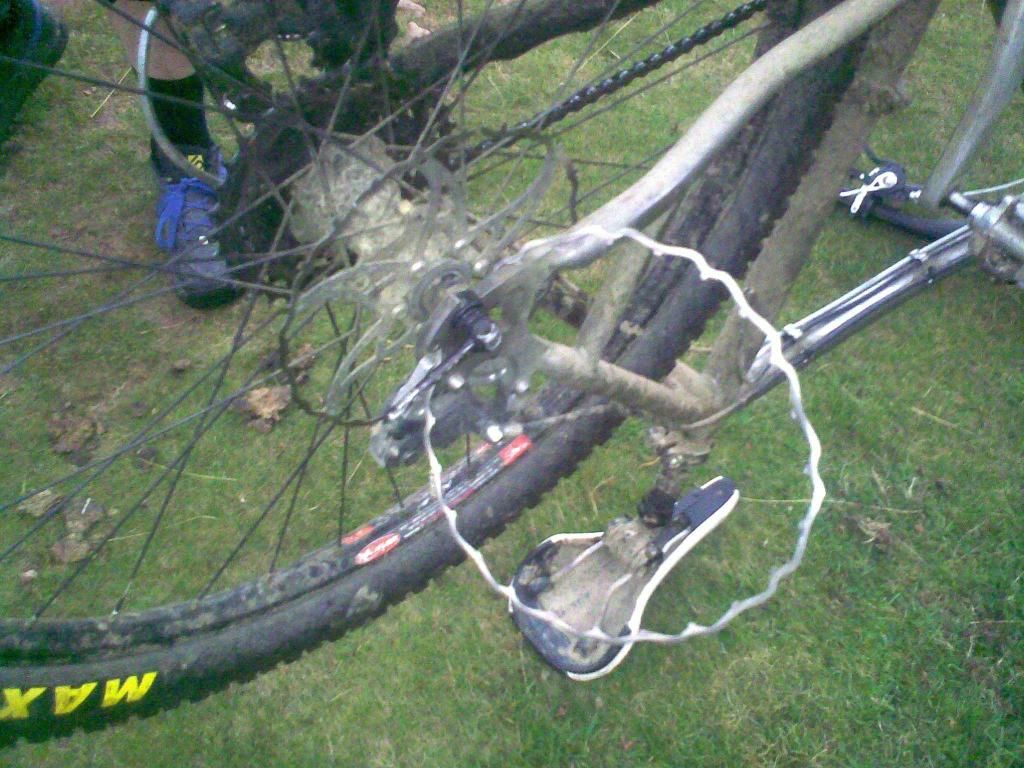When to replace disc rotor?
rumbataz
Posts: 796
I've got a 4-year old hybrid and am going to replace the disc brake pads soon. I want to check that the disc rotors don't need replacing. Is it just a case of a visual check and clean with IPA if they look okay?
0
Comments
-
You can normally tell if they are very worn - there will be a shoulder where the pads end.
If that makes sense.I don't do smileys.
There is no secret ingredient - Kung Fu Panda
London Calling on Facebook
Parktools0 -
Yeah, that makes sense - like a lip on car discs I imagine. I'll take the wheels off when I get some time and check them out carefully. I'm sure they're fine and I'll probably clean then up with IPA. The new brake pads (once I've bought them) will need to be bedded in so I may as well at least clean the rotors.
I've watched a couple of YouTube videos on changing disc rotors and it seems a fairly easy job to do if particular attention is paid to direction of rotation, order of bolt tightening and tightening to the correct torque.0 -
you can normally tell as mentioned above and also when spinning the wheel also check to see if they are warped as then you might as well change them for some new.
I was bad one time and didn't check brake pads for wear and ended up going down to the metal backing and putting some deep gouge's into the rear disc on one of my bikes.0 -
1. When they're warped, damaged, cooked or scored beyond redemption, or
2. When you see some shiny new ones and decide you want themSpecialized Roubaix Elite 2015
XM-057 rigid 29er0 -
I want to check that the disc rotors don't need replacing. Is it just a case of a visual check and clean with IPA if they look okay?
The boring answer is that you should measure the thickness with a micrometer and check it against the manufacturer's limits.
Check on the disc rotor, or with the manufacturer for any limits that apply to your discs, but for example from the internet somewhere:"Magura’s minimum recommended rotor thickness is 1.7mm. At that thickness, Magura recommends replacing them for several reasons, one being reduced heat stability. Stefan Pahl, Magura’s product manager for its bicycle division says, “In the past we had the rotor thickness limit at 1.7mm. With the Storm and Storm SL rotors we even have increased that limit to 1.8mm (which is also laser printed on the rotor, on one of its spokes).” So you can wear the rotors down by 0.2mm down from 2.0mm. The reason for the high recommended thickness is not only heat stability, but also structural stability and reduced squealing.
For Hope’s 140mm diameter and 160mm diameter floating discs, the minimum recommended rotor thickness is 1.4mm (they are 1.60mm +0.05mm when new). For all the rest of Hope’s discs, floating or plain, minimum thickness is 1.5mm (they are 1.80mm +0.05mm when new).
Hayes rotors start out life at 1.75mm to 1.78mm thick, depending on rotor diameter. Hayes’s minimum thickness call out is 1.52mm and is marked on all Hayes rotors.
Shimano rotors are made 1.8mm thick and should be replaced when the thickness has been reduced to 1.5mm. Since 2010, the 1.5mm minimum recommended rotor thickness has been printed on Shimano rotors.
[..] By my measurement, SRAM/Avid rotors seem to begin life at 1.85mm thickness, but I have not been able to find it in SRAM/Avid technical documents, and it is not printed on any of the SRAM/Avid rotors I’ve checked around here.
If they get too thin, bad things happen (not my photos).
 0
0

